
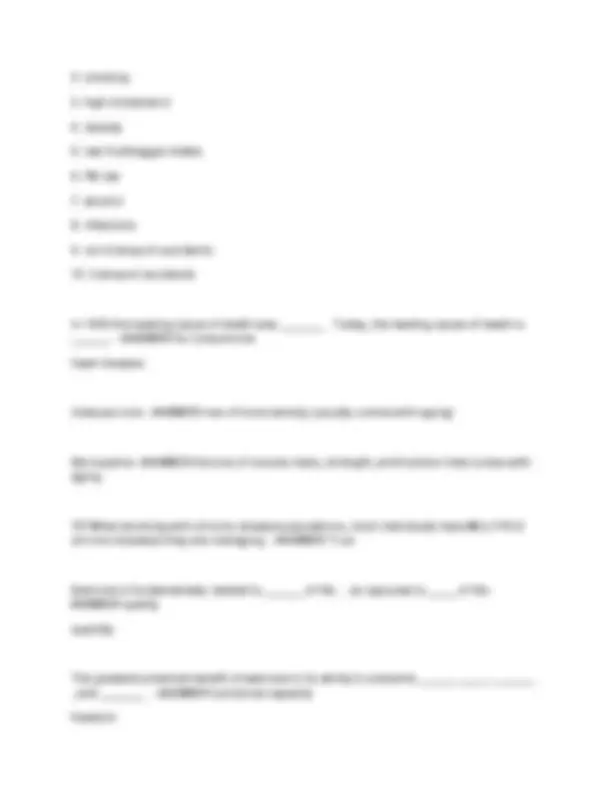
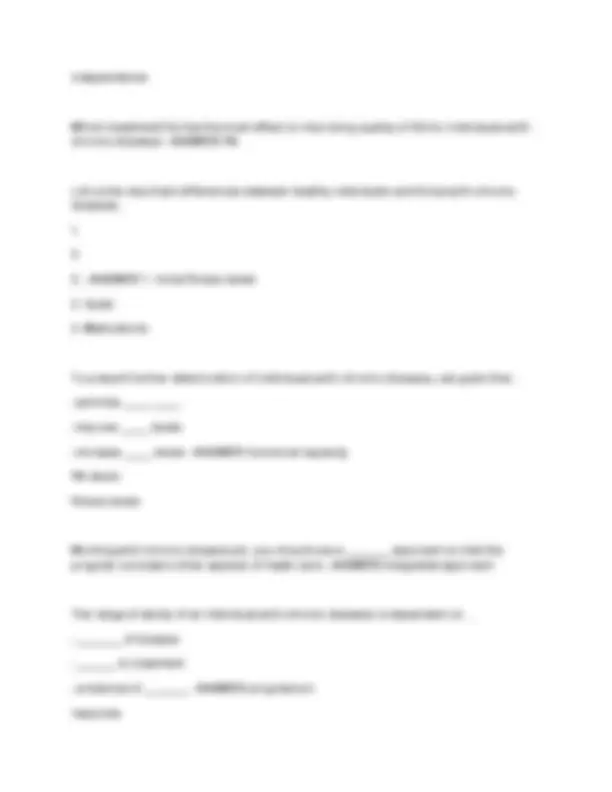
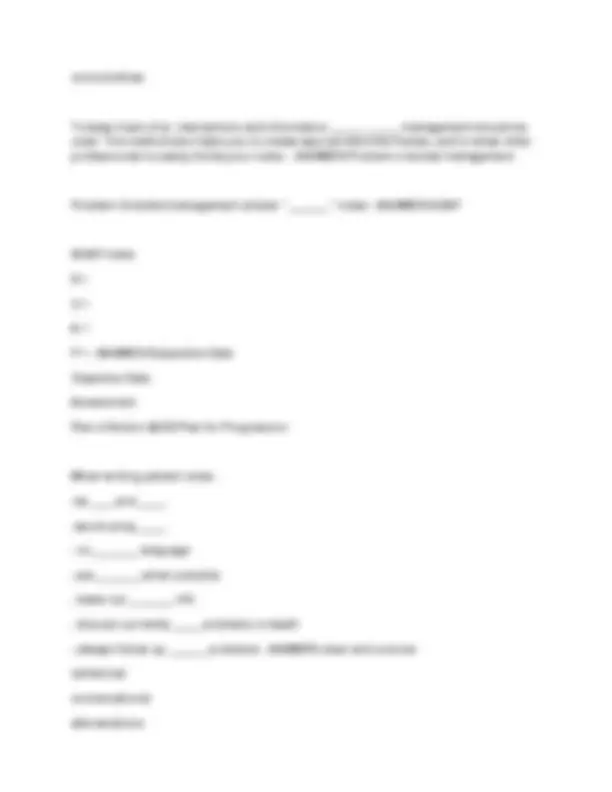
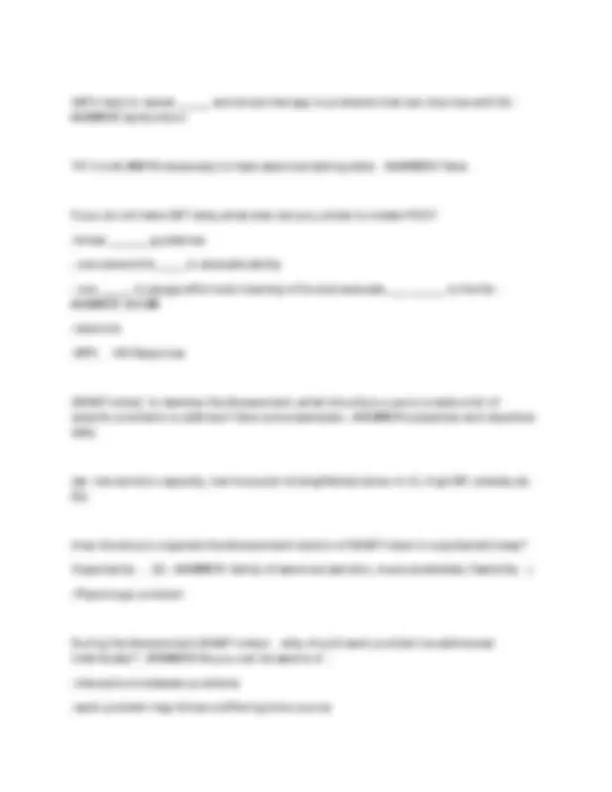
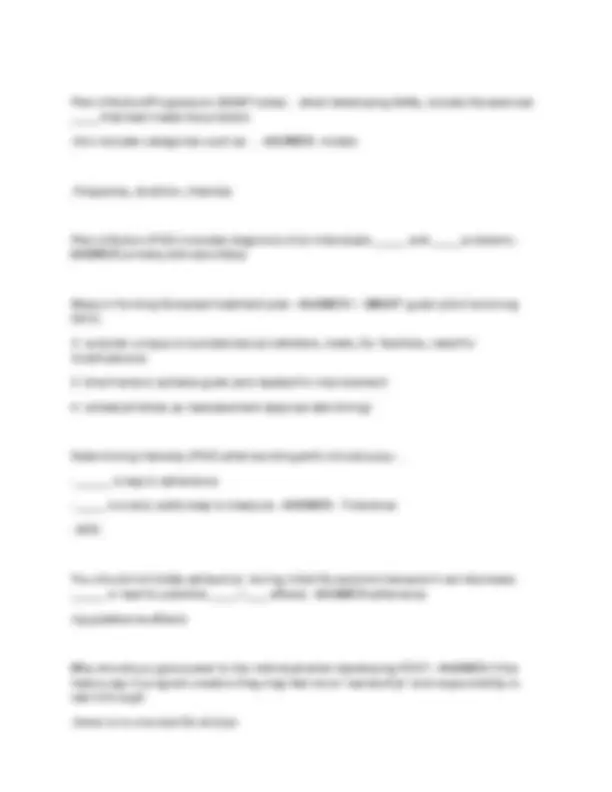
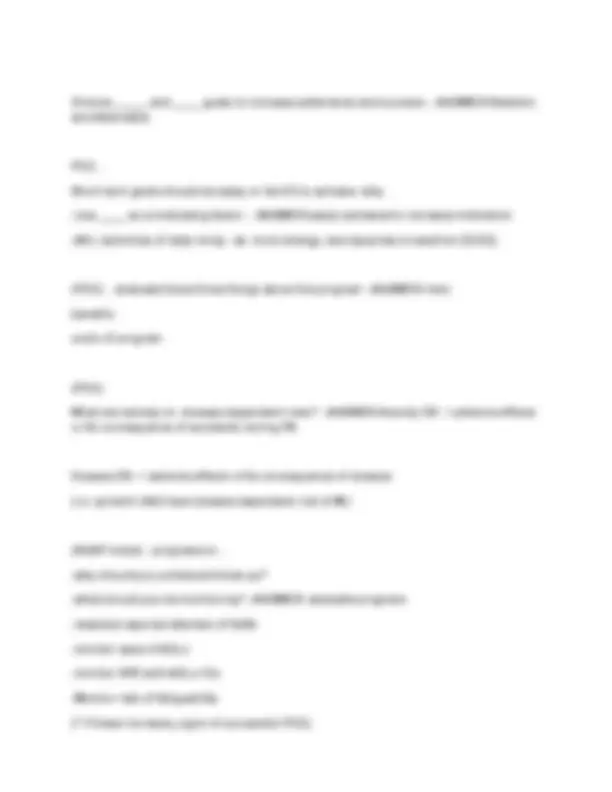
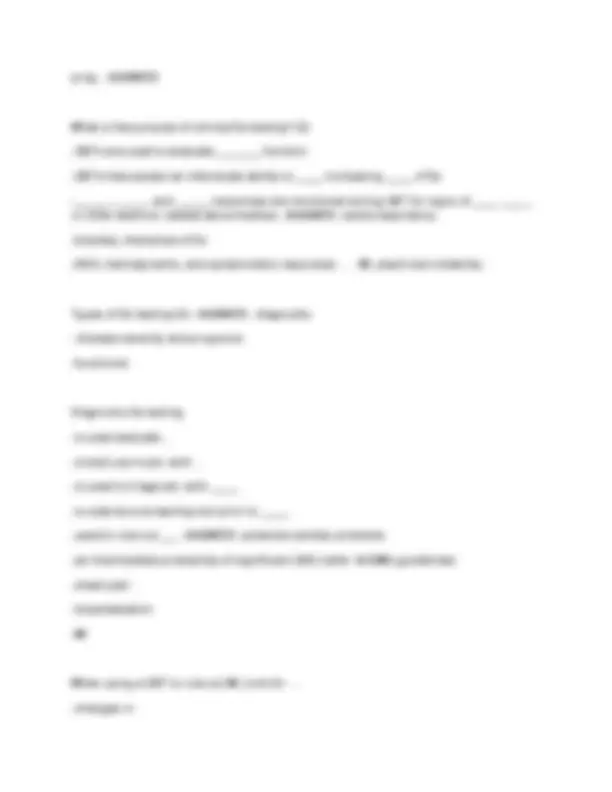
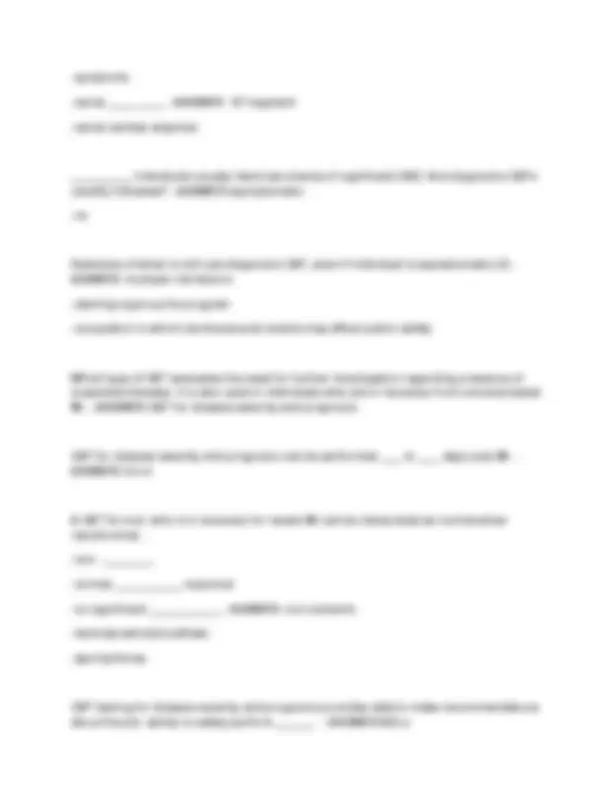
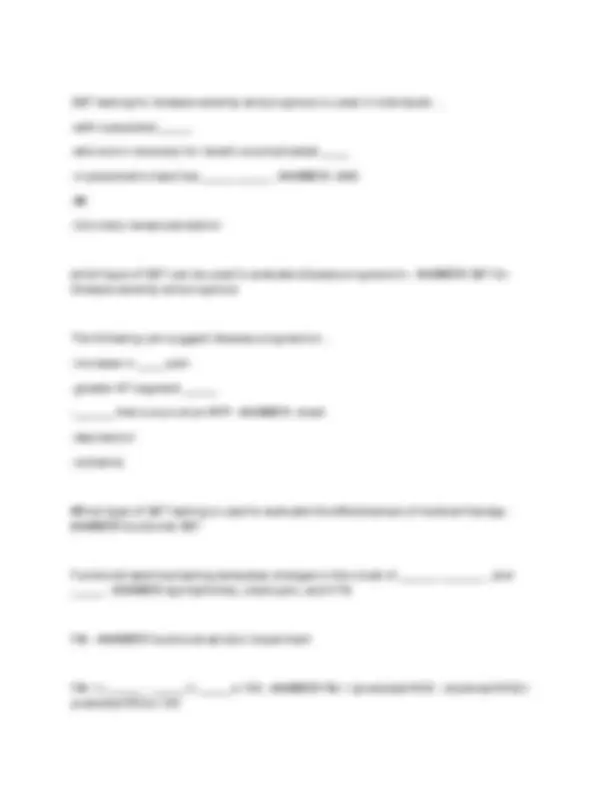
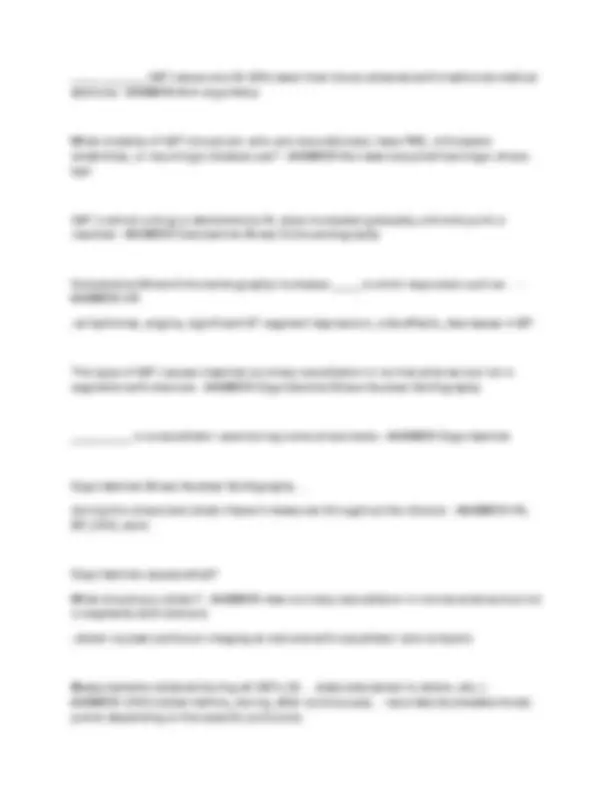
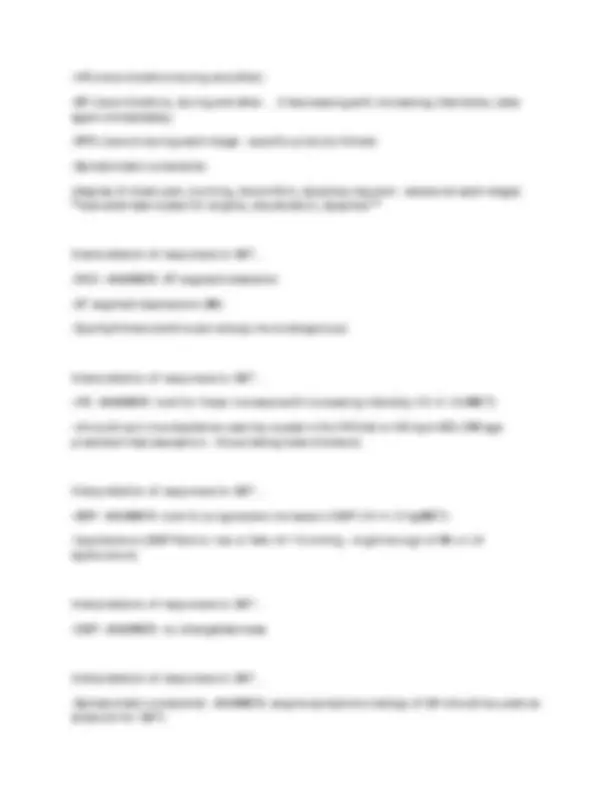
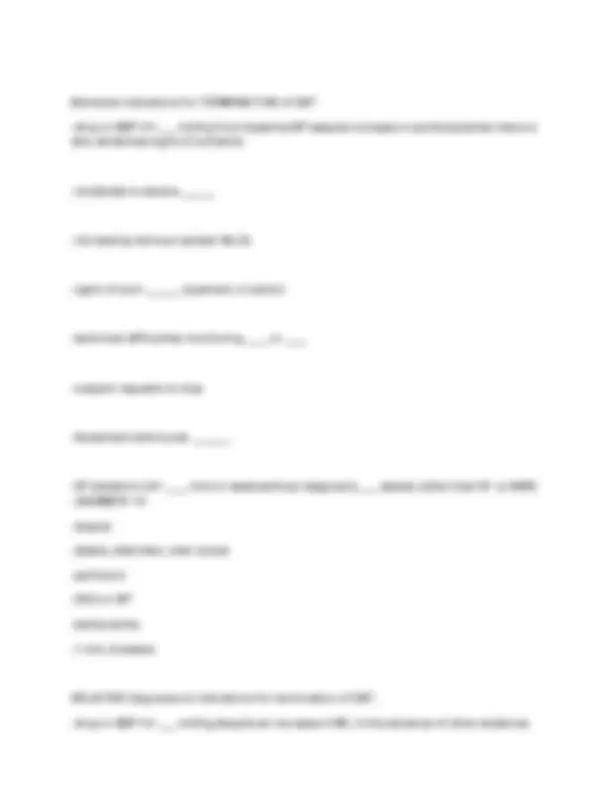
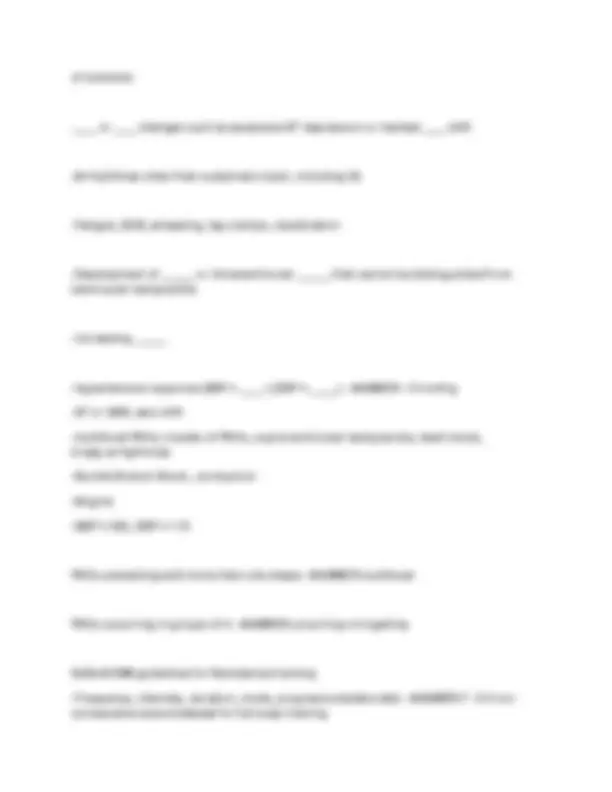
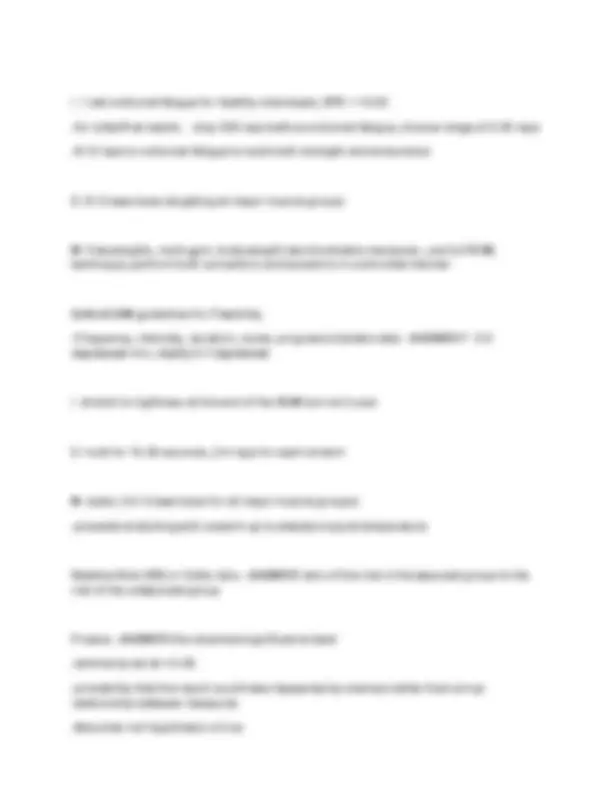
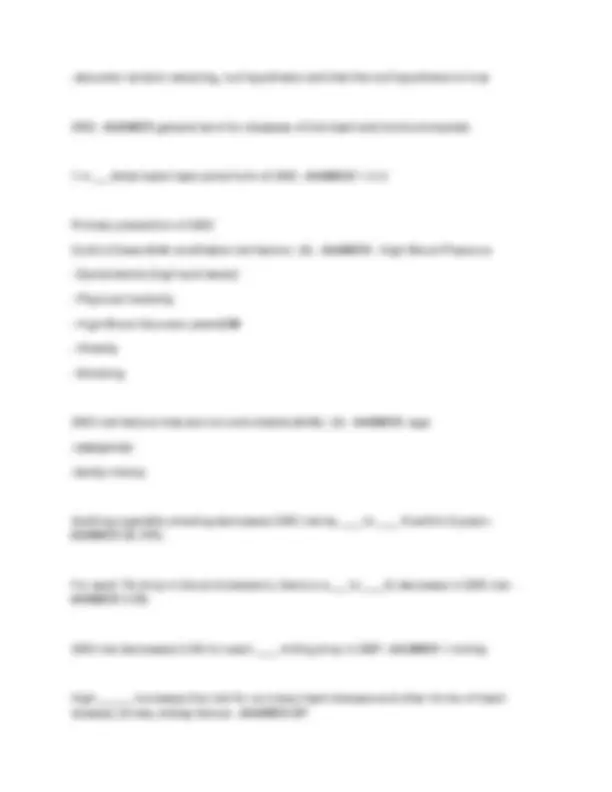
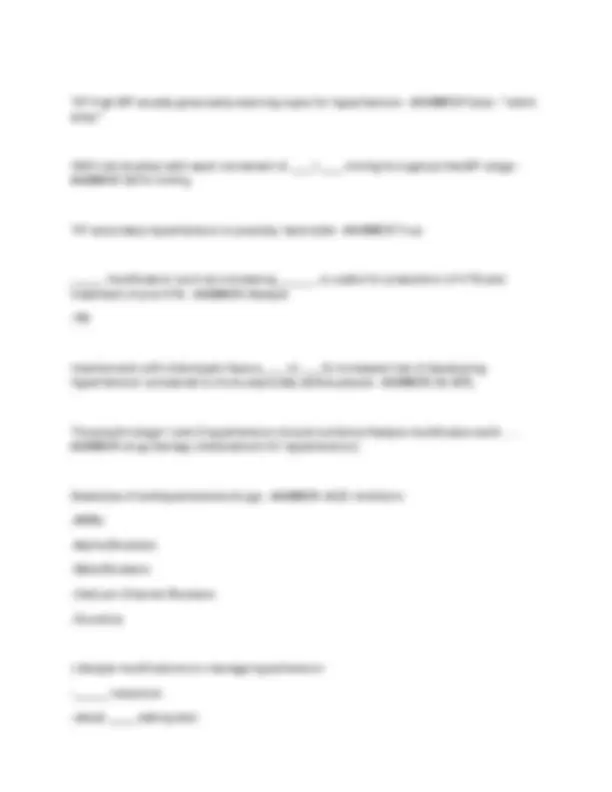
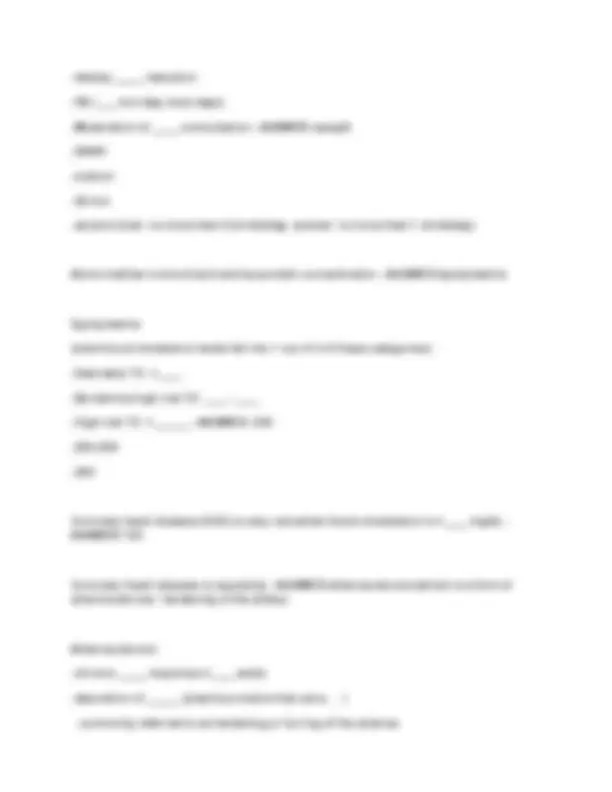
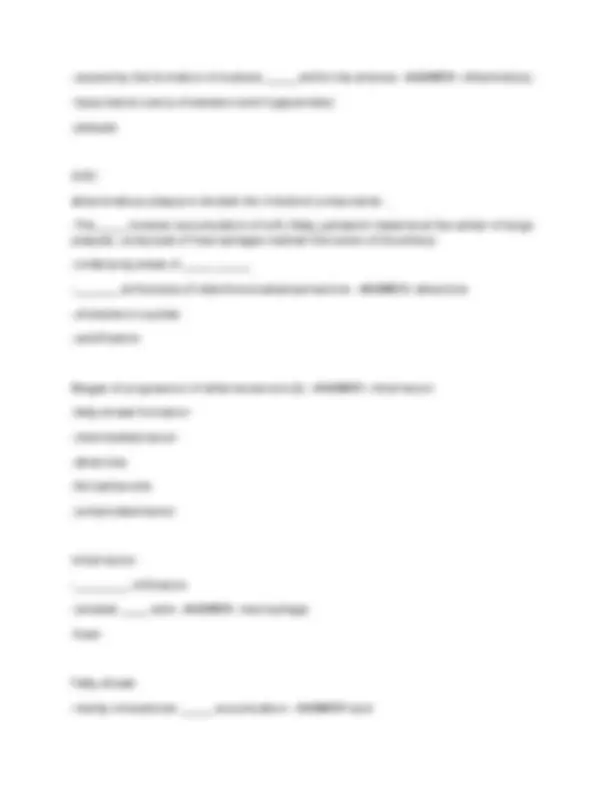

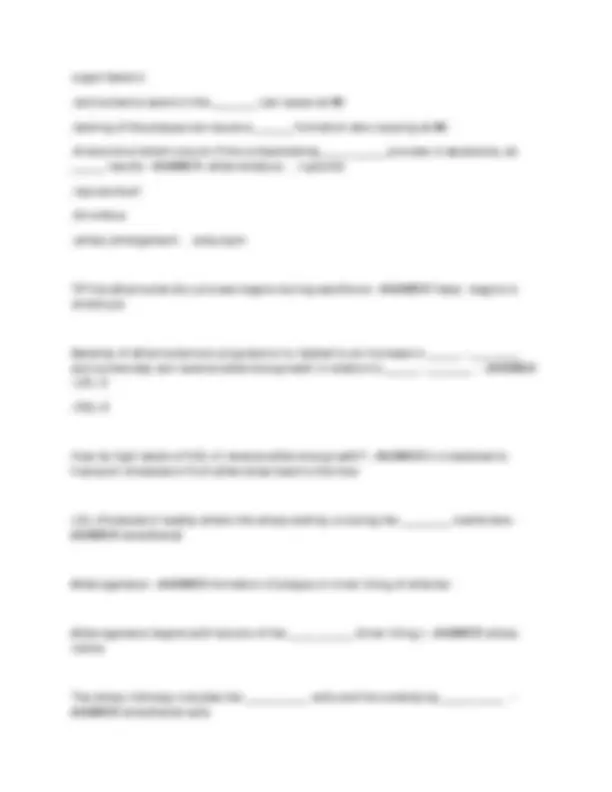
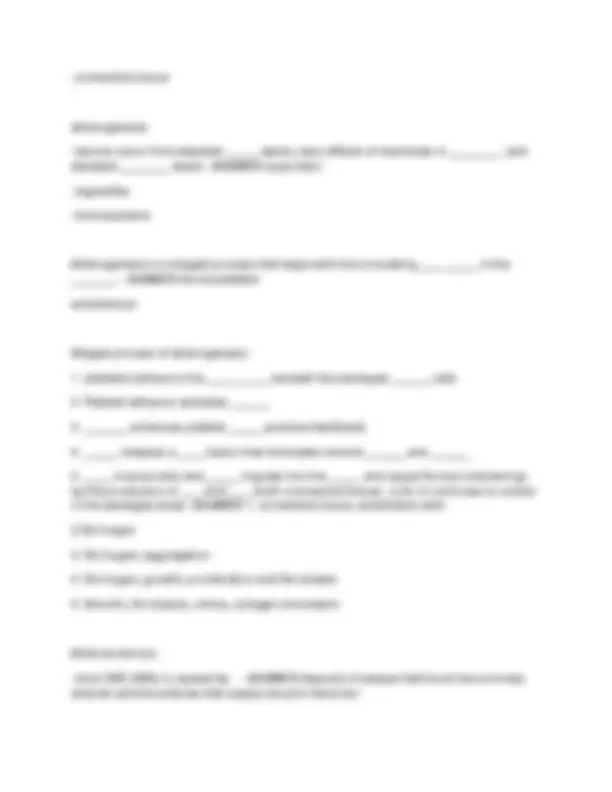
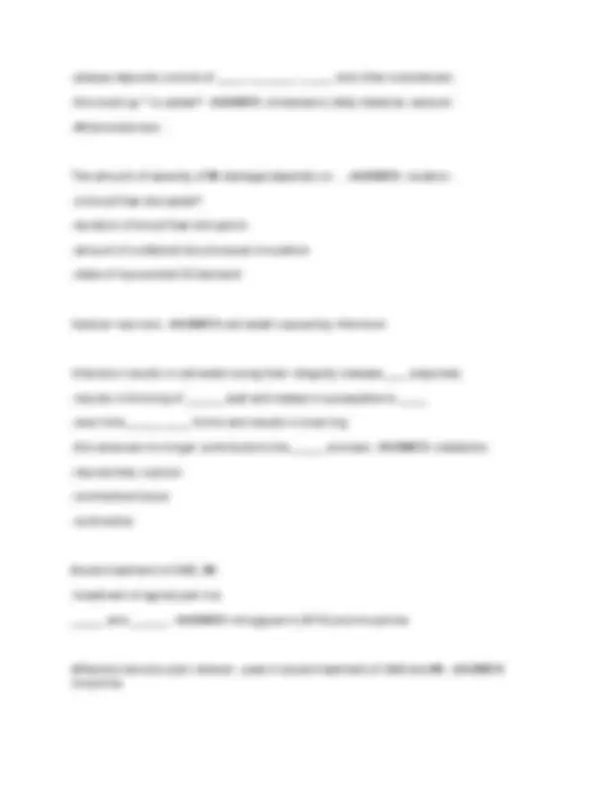
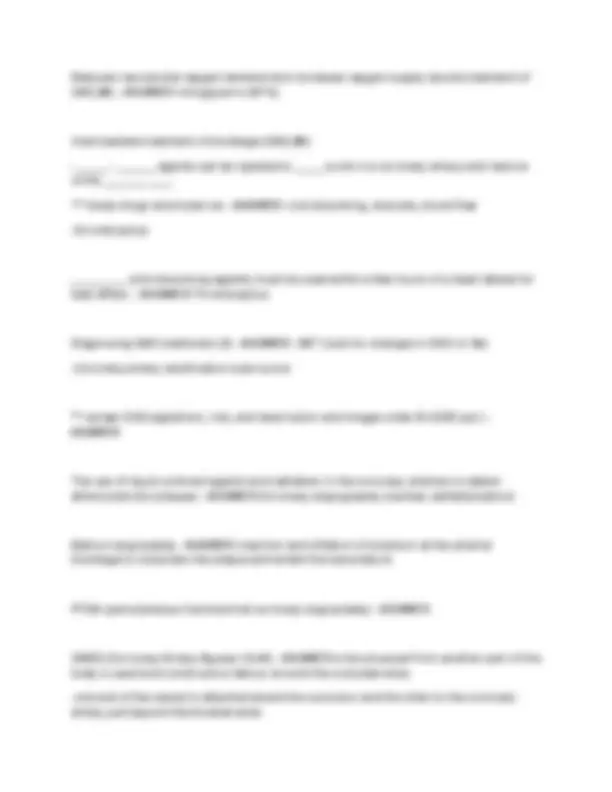
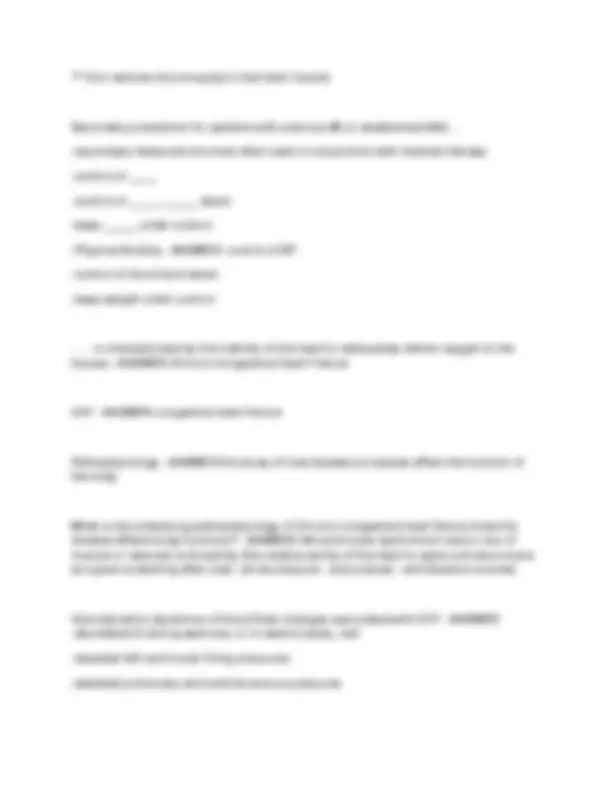
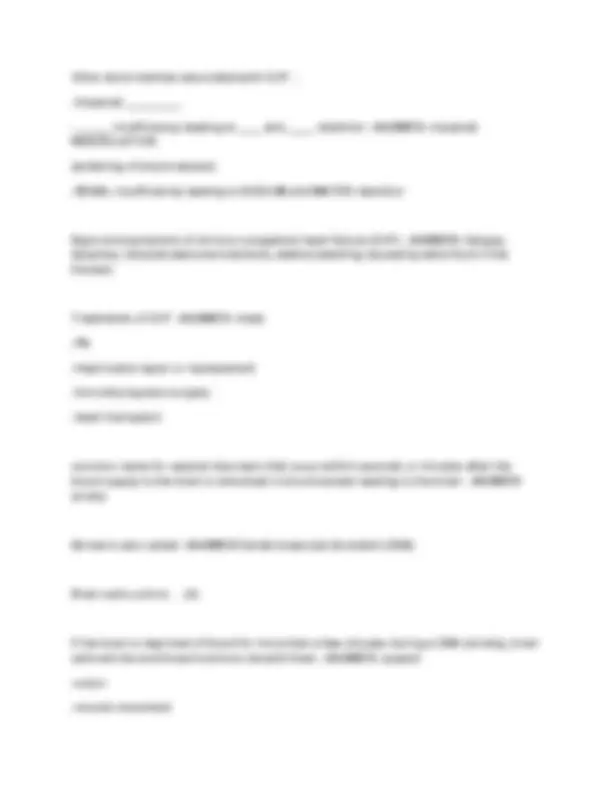
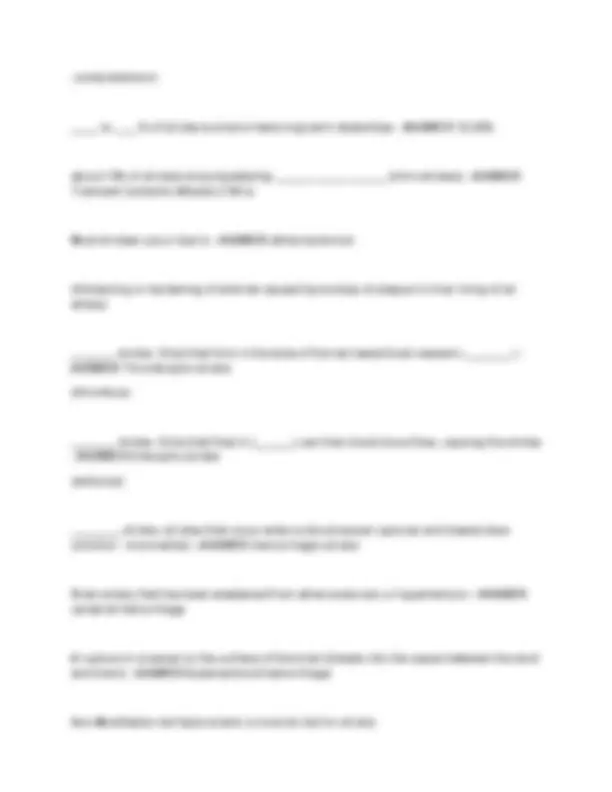
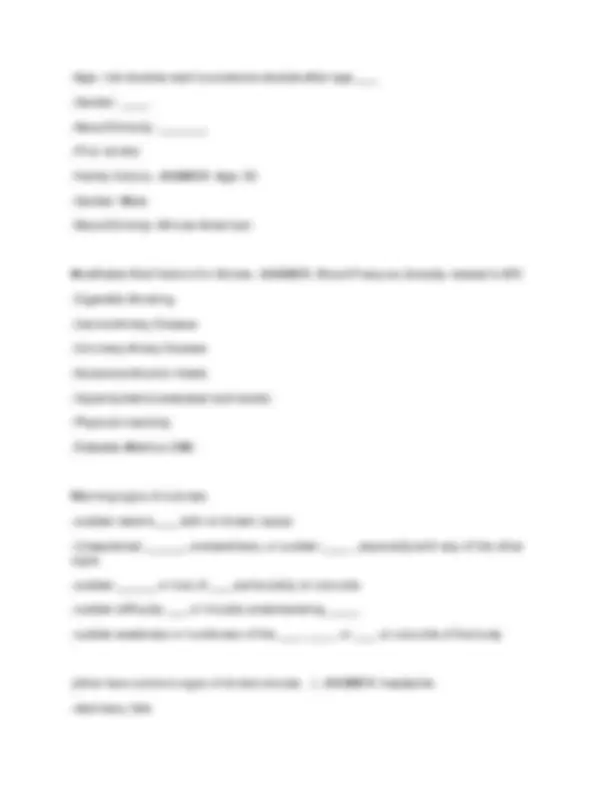
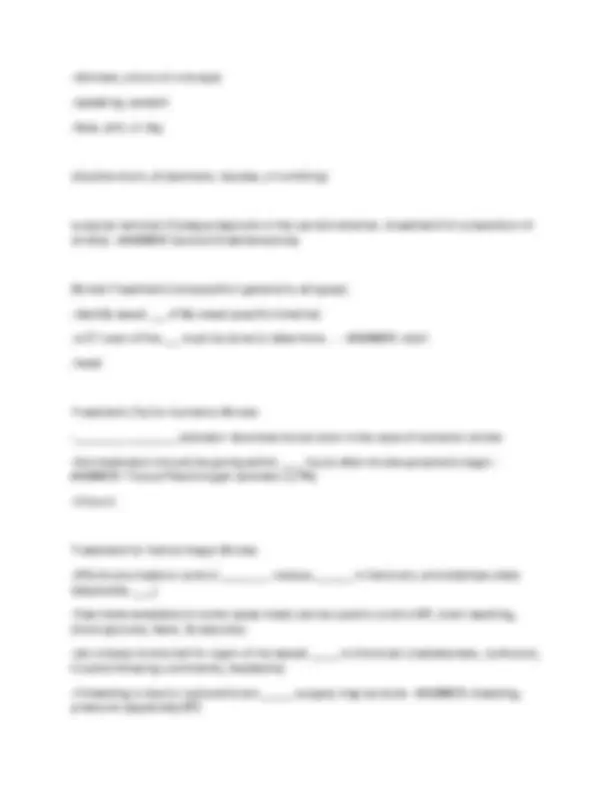
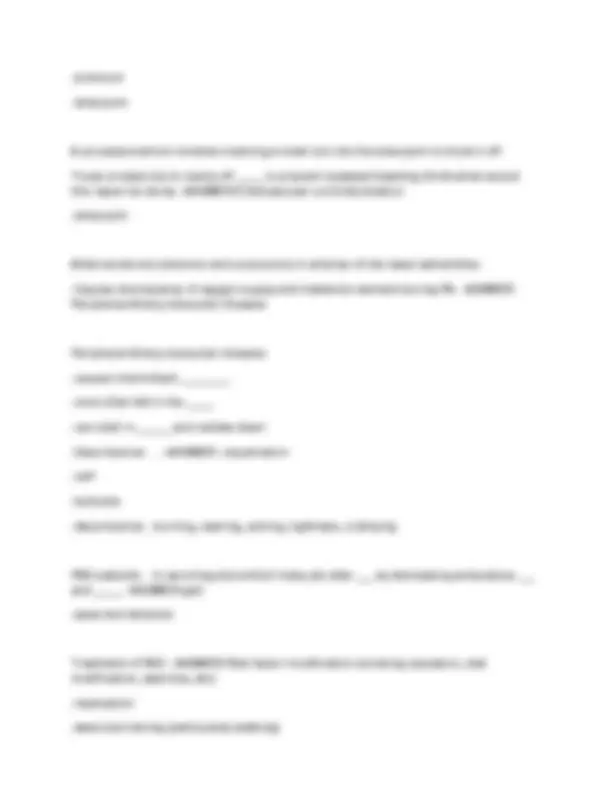
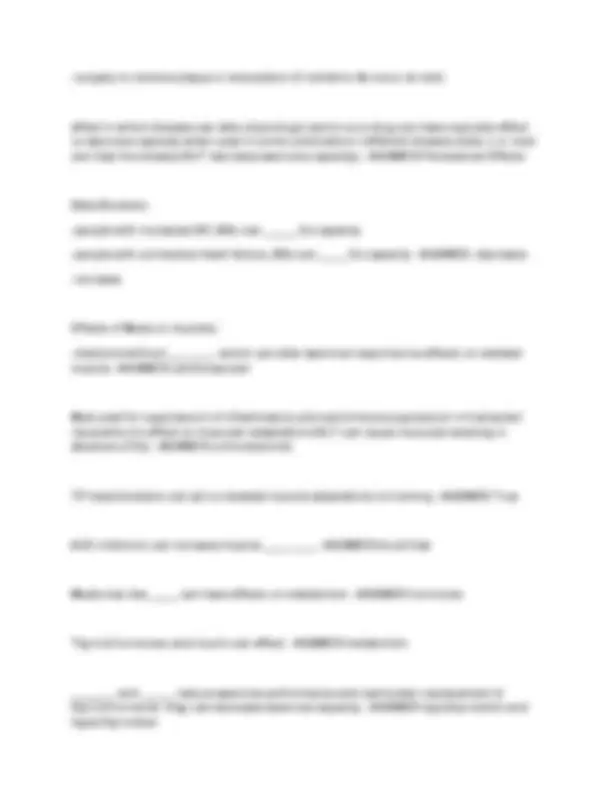
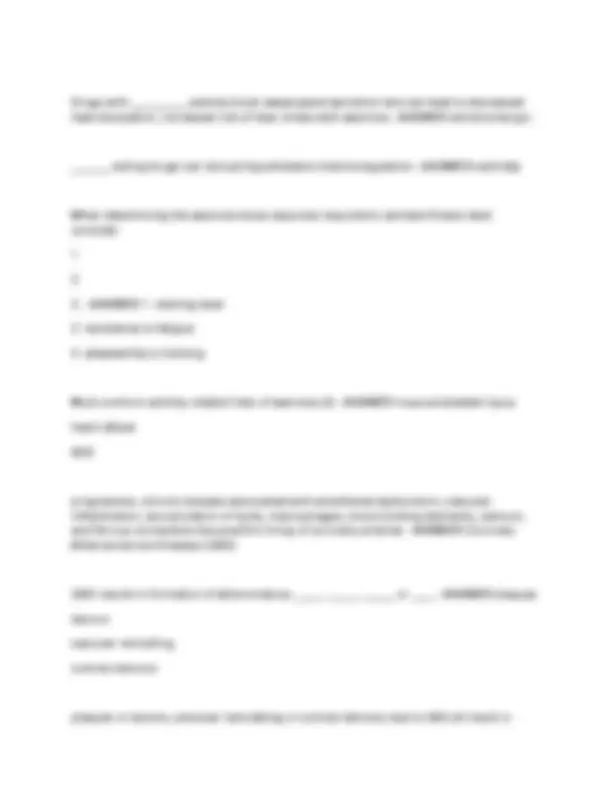
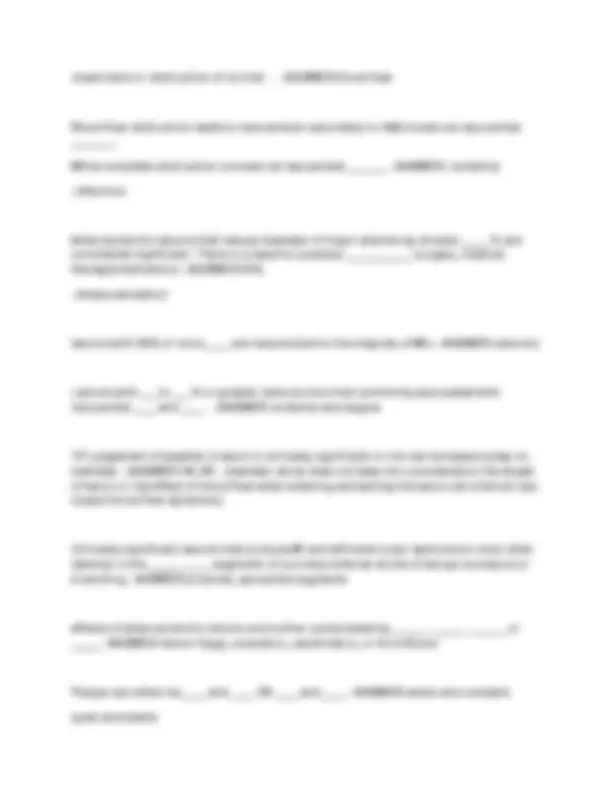
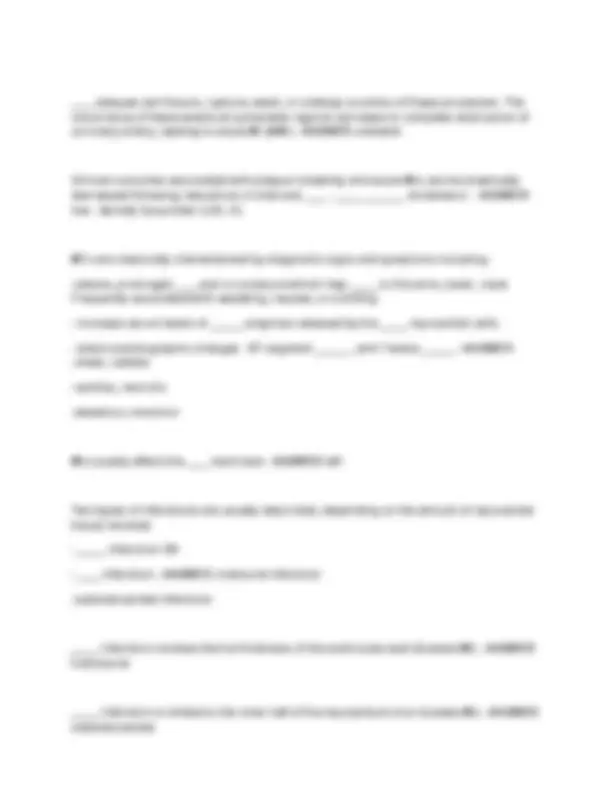
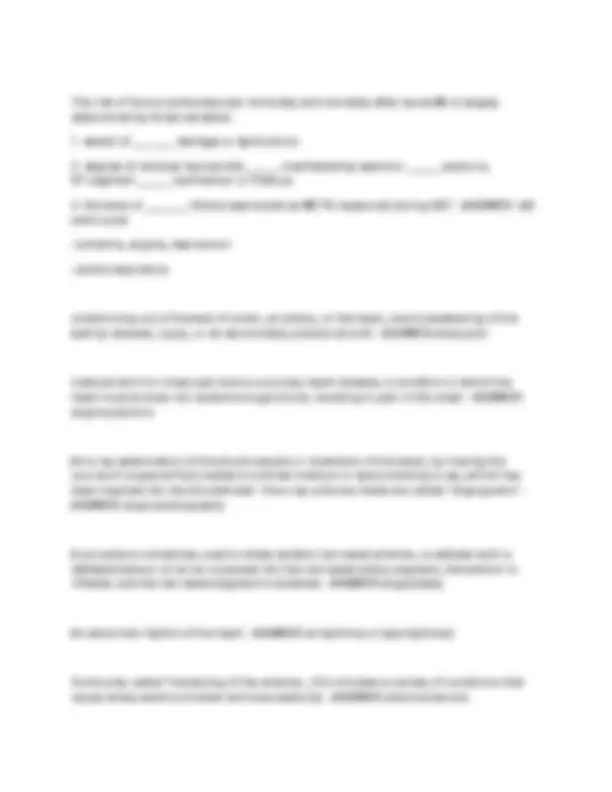

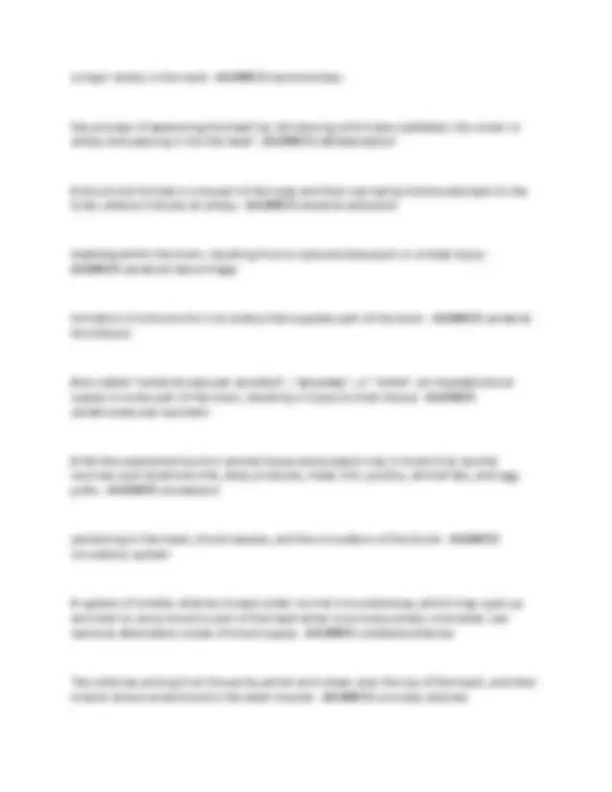
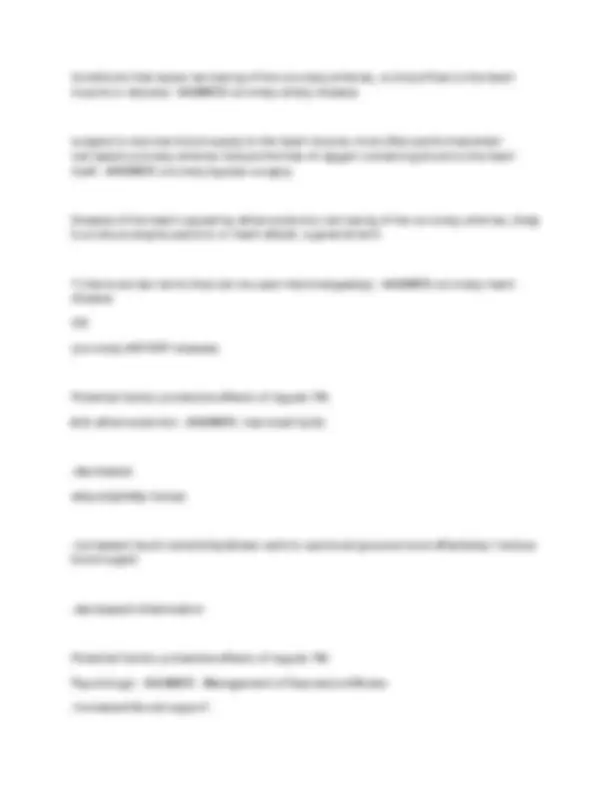
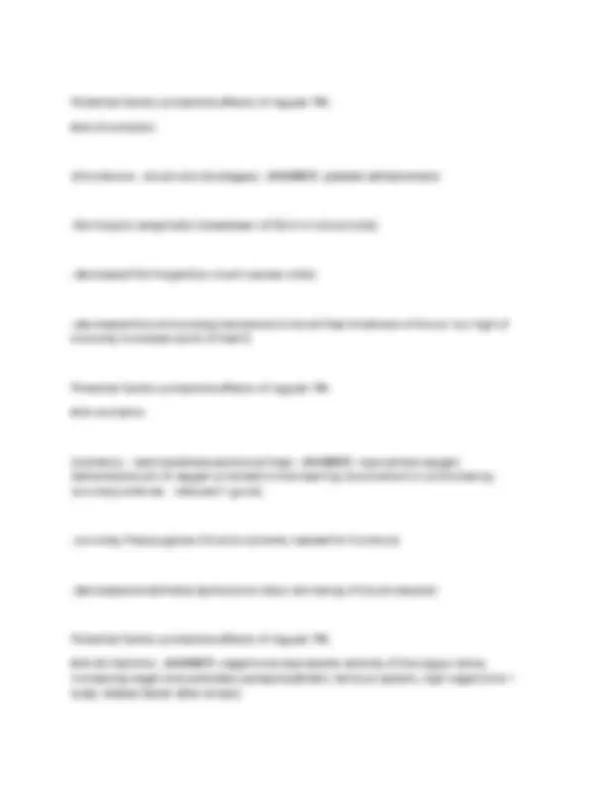
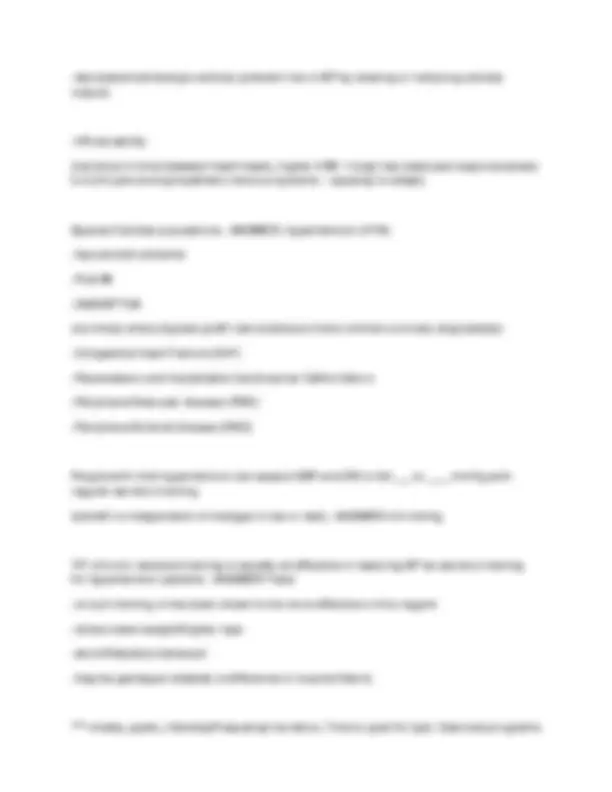
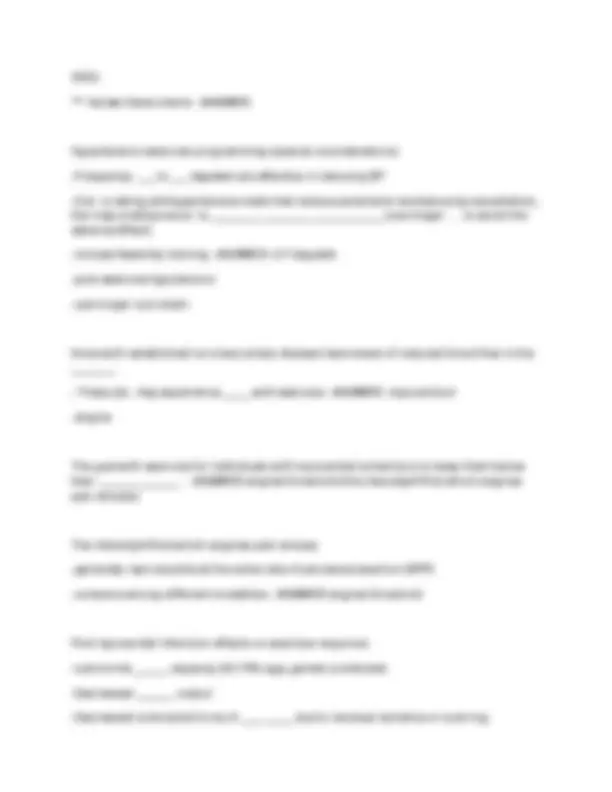
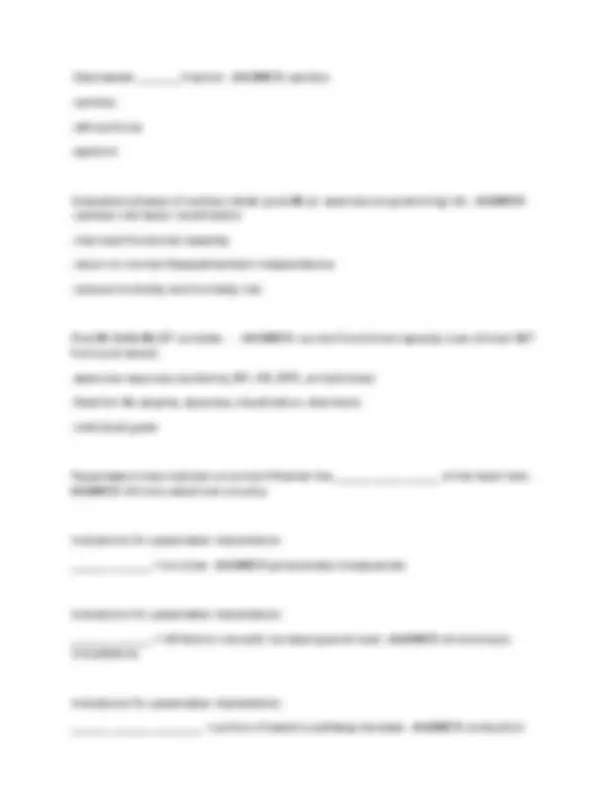
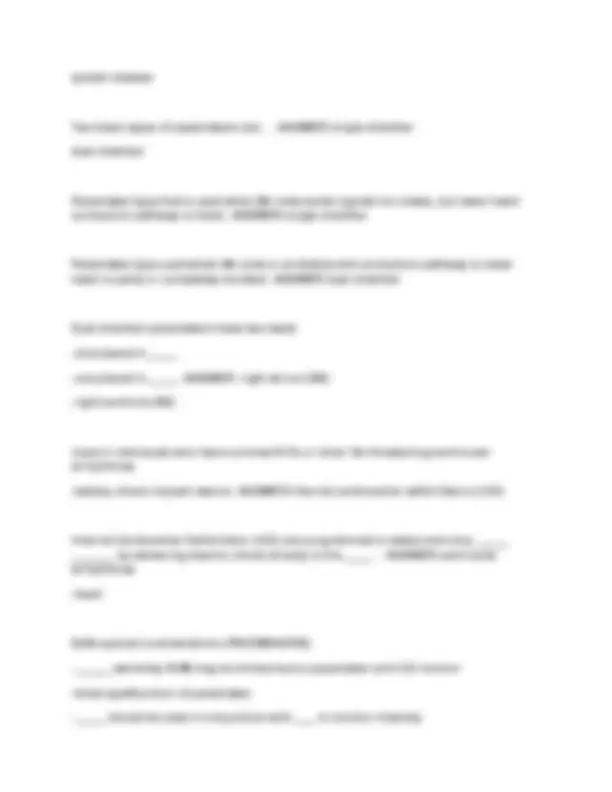
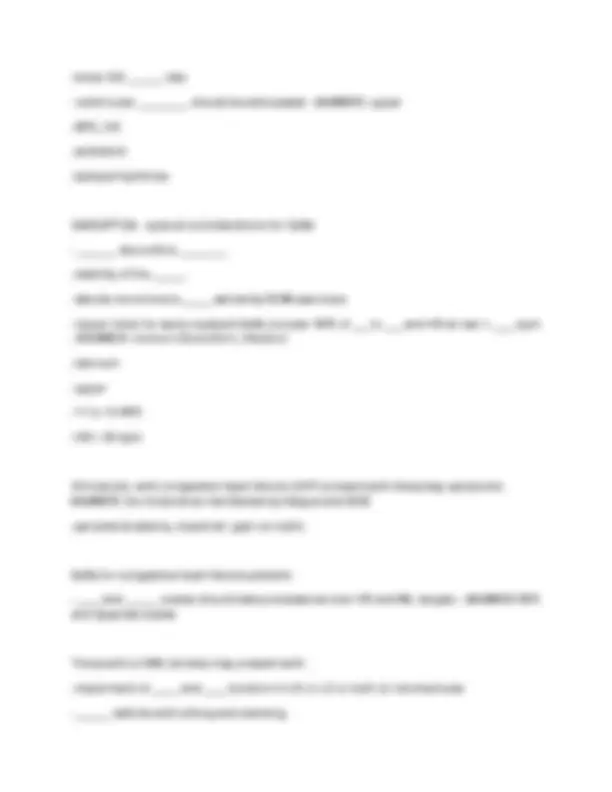
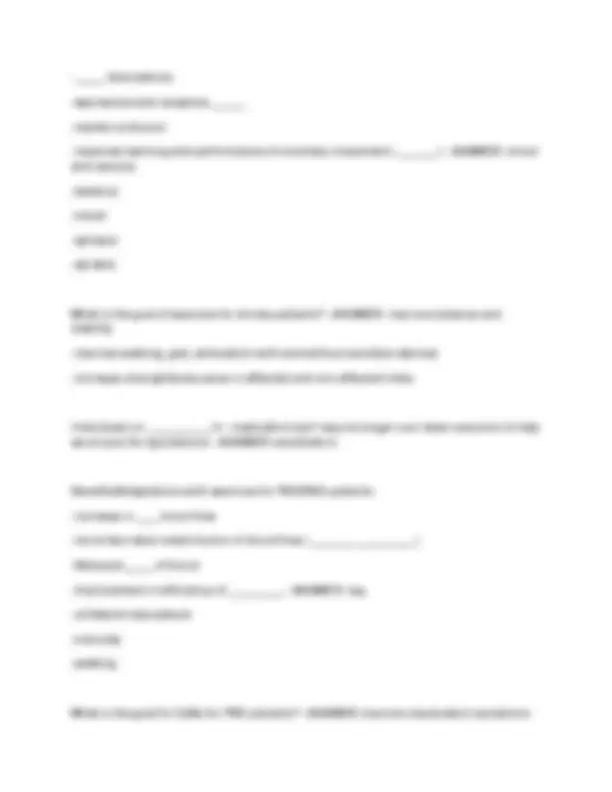
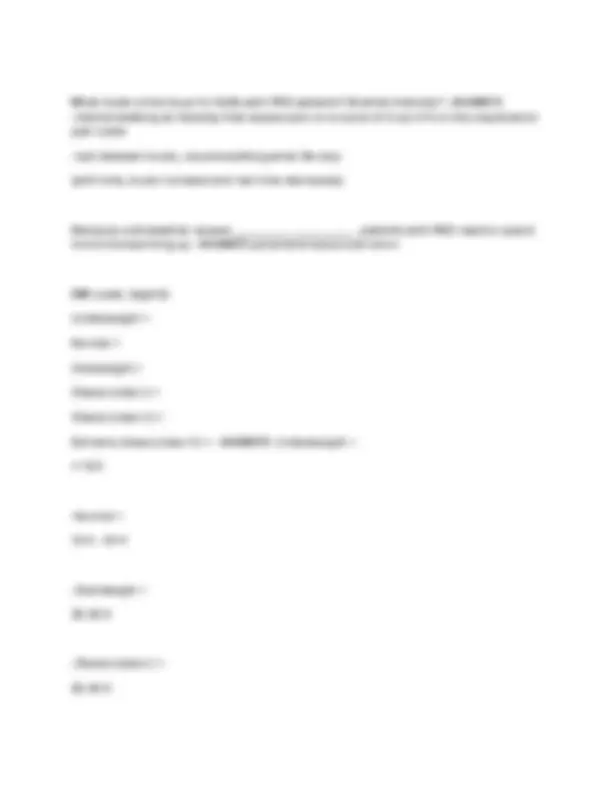
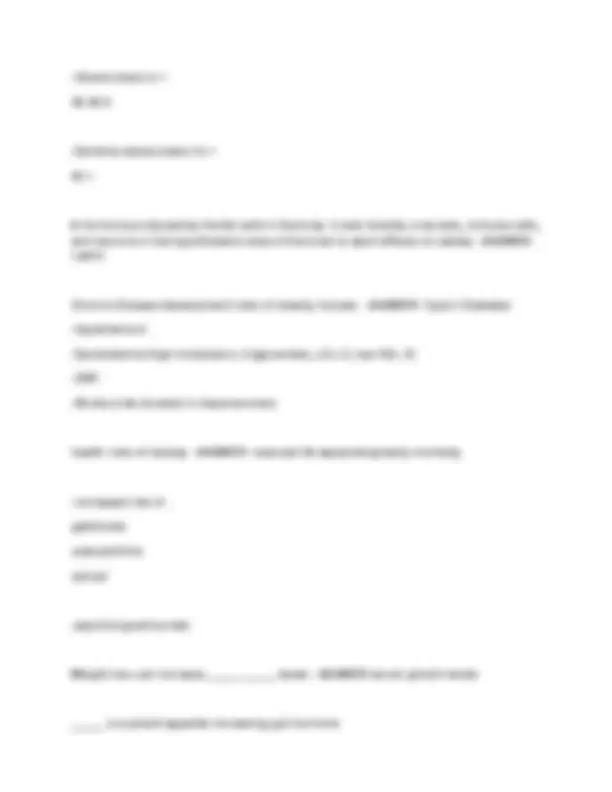
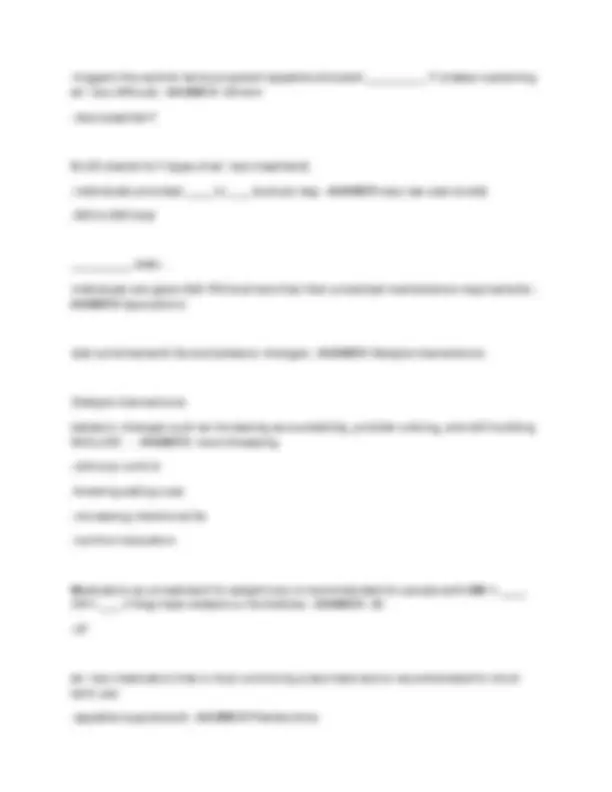
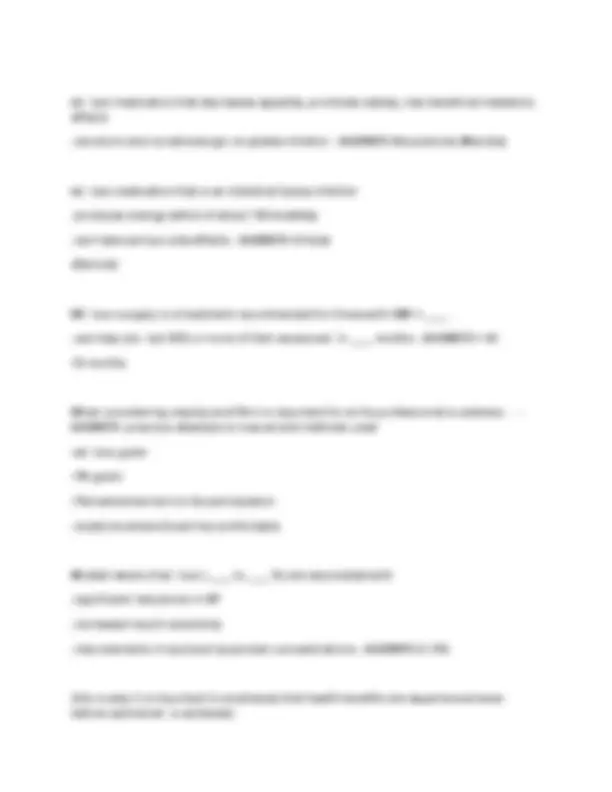
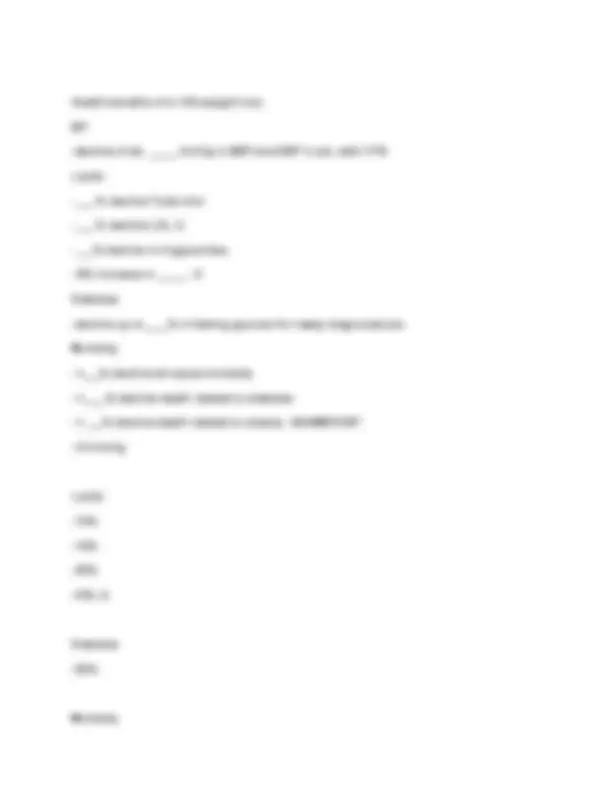
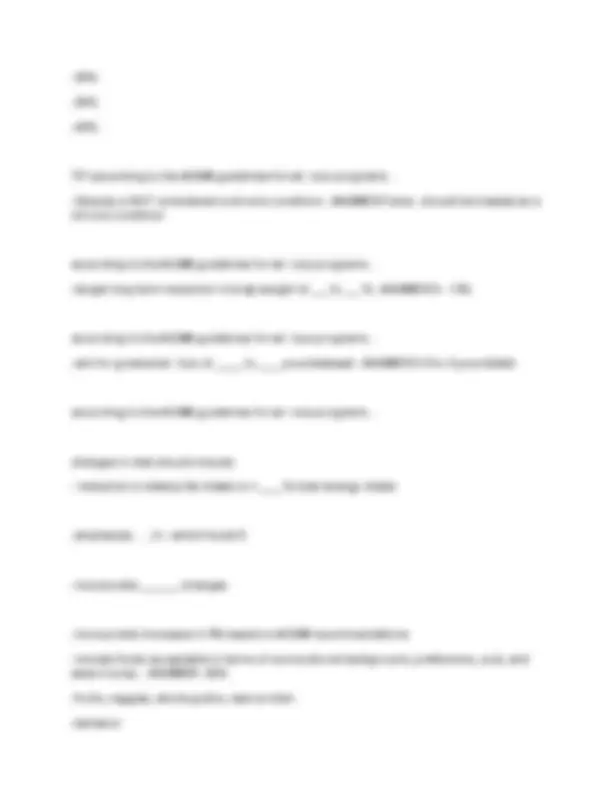
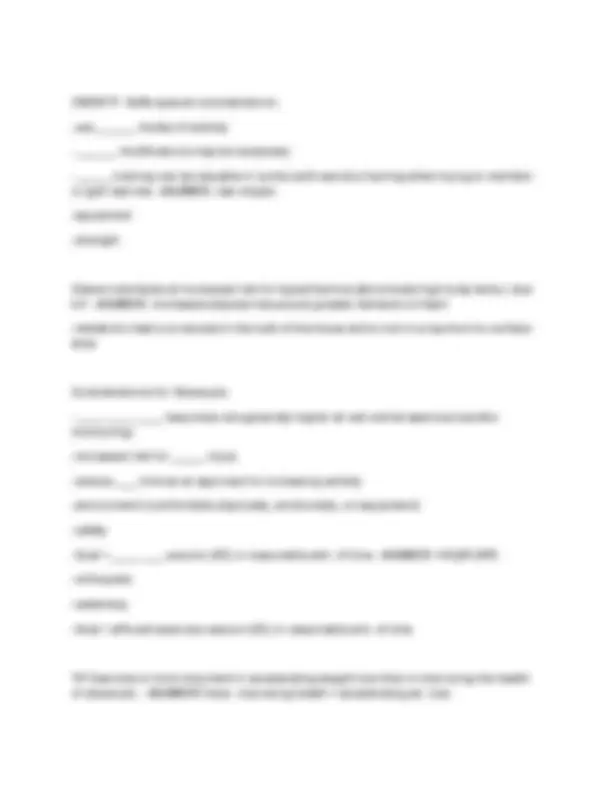
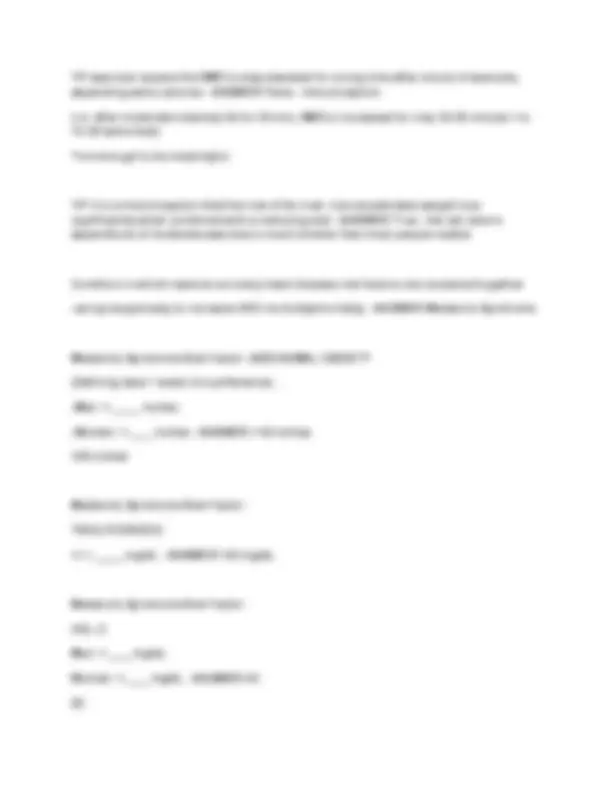
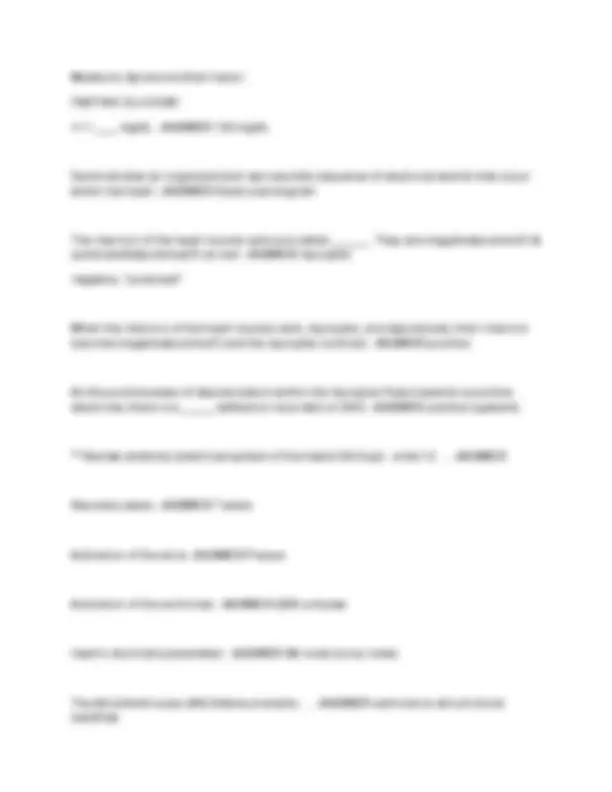
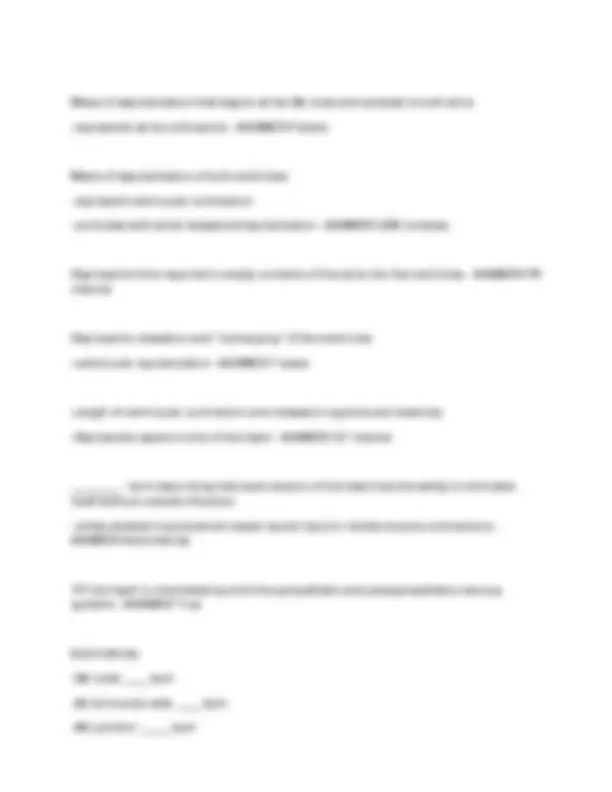
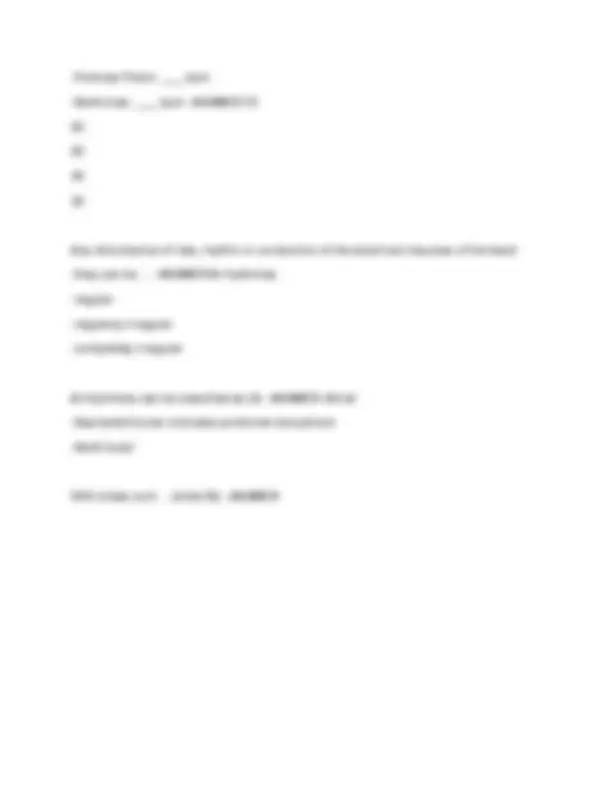


Study with the several resources on Docsity

Earn points by helping other students or get them with a premium plan


Prepare for your exams
Study with the several resources on Docsity

Earn points to download
Earn points by helping other students or get them with a premium plan
Community
Ask the community for help and clear up your study doubts
Discover the best universities in your country according to Docsity users
Free resources
Download our free guides on studying techniques, anxiety management strategies, and thesis advice from Docsity tutors
A comprehensive overview of chronic diseases, their impact on quality of life, and the role of exercise in management. it includes questions and answers covering key concepts such as leading causes of death, risk factors, exercise prescription, and soap note documentation. The detailed explanations and examples make it a valuable resource for kinesiology students.
Typology: Exams
1 / 63

This page cannot be seen from the preview
Don't miss anything!
























































chronic diseases are ________ , do not resolve ___________ ,and are rarely _______ completely - ANSWER prolonged spontaneously cured
What is the leading cause of death and disability in the US - ANSWER Chronic diseases
Chronic diseases account for ____ % of all deaths in the US. about ______ million each year. - ANSWER 70% 1.7 million
Chronic diseases cause major limitations in daily living for almost ___ out of 10 Americans. ______ million people. - ANSWER 1 out of 10 25 million
Chronic diseases are the most _______ and ______ diseases. They are also the most preventable. - ANSWER common and costly
Leading cause of death in the US (chronic diseases top 1 - 10)
(^according to CDC 2019 data) - ANSWER 1. Heart disease (about 660,000)
Leading RISK factors for death (1-10)
independence
Which treatment(Tx) has the most effect on improving quality of life for individuals with chronic diseases - ANSWER PA
List some important differences between healthy individuals and those with chronic diseases...
Goals
Medications
To prevent further deterioration of individuals with chronic diseases, set goals that... -optimize _____ _____ -improve _____ levels -increase _____ levels - ANSWER functional capacity PA levels fitness levels
Working with chronic disease pts. you should use a ________ approach so that the program considers other aspects of heath care - ANSWER integrated approach
The range of ability of an individual with chronic diseases is dependent on ...
comorbidities
To keep track of pt. interactions and information ______ ______ management should be used. This method also helps you to create appropriate time frames, and to allow other professionals to easily follow your notes. - ANSWER Problem oriented management
Problem Oriented management utilizes " _______ " notes - ANSWER SOAP
SOAP notes S = O = A = P = - ANSWER Subjective Data Objective Data Assessment Plan of Action &/OR Plan for Progression
When writing patient notes... -be ____ and _____ -avoid using _____
For objective data (SOAP), what do you need to obtain? what information does this include. - ANSWER -Physical exam conducted by physician -includes important info such as: blood lipids, blood glucose, resting BP and HR -medication list (verified info via physician on objective ONLY) -establish communication / ask for recommendations and restrictions from physician
6 categories of GXT (include description) - ANSWER 1. Aerobic (perform Ex using high rate of oxygen consumption (VO2max)
Objective data: perform tests and obtain testing results from GXT to help characterize the pts. _______ ______ - ANSWER Ex Capacity
T/F you can perform GXT at your own digression without advisement from pts. MD - ANSWER False
Factors to consider when choosing GXT...
GXTs help to reveal ______ and direct therapy to problems that can improve with Ex - ANSWER dysfunction
T/F It is ALWAYS necessary to have exercise testing data. - ANSWER False
If you do not have GXT data, what else can you utilize to create POC? -follow _______ guidelines
(SOAP notes): to develop the Assessment, what should you use to create a list of specific problems to address? Give some examples - ANSWER subjective and objective data
(ex. low aerobic capacity, low muscular strength/endurance in LE, High BP, anxiety ab. Ex)
How should you organize the Assessment section of SOAP notes in a systematic way? Organize by ... (2) - ANSWER -family of exercise (aerobic, musculoskeletal, flexibility...) -Physiologic problem
During the Assessment (SOAP notes)... why should each problem be addressed individually? - ANSWER So you can be aware of... -interactions between problems -each problem may follow a differing time course
Choose ______ and _____ goals to increase adherence and success. - ANSWER Realistic and Attainable
POC... Short term goals should be (easy or hard?) to achieve. why. -Use _____ as a motivating factor. - ANSWER easily achieved to increase motivation -ADL (activities of daily living - ex. more energy, less dyspnea on exertion [DOE])
(POC) .. evaluate these three things about the program - ANSWER risks benefits costs of program
(POC) What are activity vs. disease dependent risks? - ANSWER Activity DR. = adverse effects or Ex consequence of accidents during PA
Disease DR. = adverse effects of Ex consequence of disease (i.e. ppl with CAD have disease dependent risk of MI)
(SOAP notes) - progression... -why should you schedule follow-up? -what should you be monitoring? - ANSWER -evaluate progress -reassess appropriateness of ExRx -monitor ease of ADLs -monitor RPE with ADLs / Ex -Monitor rate of fatiguability (^ if these increase, signs of successful POC)
Report progress in ______ terms. (i.e. a 25% increase in aerobic capacity might not necessarily be meaningful to the pt.) - ANSWER meaningful
When monitoring Ex look for... -sudden onset of _______ in addition to insufficient _____ and overtraining -monitor stability of _____ medical problems and _____ changes -if an activity causes _____ , avoid -when in doubt about _____ , err on side of caution and increase .... in small increments - ANSWER -exhaustion ... recovery -underlying .. medication -pain -progression (FIIT)
T/F You should never increase any element of the FIIT principle in conjunction in a single Ex session. - ANSWER True
(review medical abbreviations -ppt. 1, slide 29) - ANSWER
For most individuals, regular Ex reduces the risk of CAD by ____ % compared to those who do not. - ANSWER 50
For people with preexisting CAD, vigorous PA _______ and ______ increases the risk of ____ and _____ - ANSWER acutely and transiently -SCD (sudden cardiac death) and acute, non-fatal MI
T/F Ex tends to provoke cardiac events in people with CAV as well as in people with normal CV systems. - ANSWER False - not in people with normal CV systems
prog. - ANSWER
What is the purpose of clinical Ex testing? (3) -GXTs are used to evaluate ________ function -GXTs help assess an individuals ability to _____ increasing _____ of Ex -______ , _____ , and ______ responses are monitored during GXT for signs of ____ , ____ , or other exertion related abnormalities - ANSWER -cardiorespiratory -tolerate, intensities of Ex -EKG, hemodynamic, and symptomatic responses ..... MI, electrical instability
Types of Ex testing (3) - ANSWER - diagnostic
Diagnostic Ex testing -is used evaluate ... -is best use in pts. with .. -is used to triage pts. with _____ -is used as a screening tool prior to _____ -used to rule out ___ - ANSWER -potential cardiac problems -an intermediate probability of significant CAD (refer: ACSMs guidelines) -chest pain -hospitalization -MI
When using a GXT to rule out MI, look for ... -changes in ..
-symptoms -serial _____ _____ - ANSWER - ST segment -serial cardiac enzymes
___________ individuals usually have low chance of significant CAD. Are diagnostic GXTs usually indicated? - ANSWER asymptomatic -no
Examples of when to still use diagnostic GXT, even if individual is asymptomatic (3) - ANSWER -multiple risk factors -starting vigorous Ex program -occupation in which cardiovascular events may affect public safety
Which type of GXT evaluates the need for further investigation regarding presence of suspected disease. It is also used in individuals who are in recovery from uncomplicated MI. - ANSWER GXT for disease severity and prognosis
GXT for disease severity and prognosis can be performed ____ to ____ days post MI. - ANSWER 3 to 4
A GXT for a pt. who is in recovery for recent MI can be interpreted as normal when results show... -non - _________ -normal ____________ response -no significant _____________ - ANSWER -non ischemic -hemodynamic(bloodflow) -dysrhythmias
GXT testing for disease severity and prognosis provides data to make recommendations about the pts. ability to safely perform _______. - ANSWER ADLs
Functional GXT... -Negative FAI scores indicate ___________ -Positive FAI scores indicate __________ - ANSWER -above average fitness level -physical impairment
Functional GXTs should be used if one has ... -calculated ______ ________ -magnitude of ____ _____ changes -_______ response during exercise - ANSWER -functional capacity -ST segment -angina
Functional exercise testing can estimate a patients prognosis using the _____ _______. - ANSWER Duke normagram
Defining Atherosclerotic CVD Positive Risk Factor criteria: -Age: (men = > _____ ) (women = > ____)
-smoking: current or those who quit within previous ____ months
-Physical Inactivity: not participation in at least ____ min of moderate intensity PA on at least ____ days of the weak for at least ____ months
-Obesity: (BMI >/= ____) (Waist girth >/= ____ cm for men and >/= ____ cm for women) - ANSWER -45 ... 55
-6 months
-30 min, 3 days/wk, 3 months
-30... 102cm ... 88 cm
Defining Atherosclerotic CVD Positive Risk Factor criteria: -Hypertension: (SBP >/= ____ ) (DBP >/= ____) - confirmed on 2 occasions
-Dyslipidemia: (LDL cholesterol >/= _____) (HDL < ____ ) or on ________ meds
-Diabetes: Fasting plasma glucose >/= ______ - ANSWER -130 mmHg, 80 mmHg
-130 ... 50 ... lipid-lowering medication
Defining Atherosclerotic CVD Negative Risk Factor criteria:
GXT test modalities with large increments such as Bruce or Ellsted are better suited for .... - ANSWER younger and/or physically active individuals
GXT test modalities with smaller increments such as Naughton, Blake-ware, 1 MET/stage or lower are better suited for .... - ANSWER older and/or reconditioned individuals and patients with chronic diseases
When using EKG monitoring it is important to remind clients not to ... - ANSWER hold the handrails
-HR (record before during and after) -BP (record before, during and after ... if decreasing with increasing intensities, take again immediately) -RPE (record during each stage - specific protocol follow) -Symptomatic complaints (degree of chest pain, burning, discomfort, dyspnea, leg pain - assess at each stage) **see alternate scales for angina, claudication, dyspnea **
Interpretation of responses to GXT... -EKG - ANSWER -ST segment elevation -ST segment depression (MI) -Dysrhythmias (ventricular ectopy more dangerous)
Interpretation of responses to GXT... -HR - ANSWER -look for linear increase with increasing intensity (10 +/- 2 b/MET) -chronotropic incompetence seen by a peak in Ex HR that is >20 bpm BELOW age predicted max (exception - those taking beta blockers)
Interpretation of responses to GXT... -SBP - ANSWER -look for progressive increase in SBP (10 +/- 2 Hg/MET) -Hypotension (SBP fails to rise or falls >/= 10 mmHg - might be sign of MI or LV dysfunction)
Interpretation of responses to GXT... -DBP - ANSWER -no change/decreae
Interpretation of responses to GXT... -Symptomatic complaints - ANSWER -angina symptoms (ratings of 3/4 should be used as endpoint for GXT)
Absolute indications for TERMINATION of GXT -drop in SBP >/= ___ mmHg from baseline BP despite increase in workload when there is also evidence/ signs of ischemia
-moderate to severe ______
-increasing nervous system Sx (3)
-signs of poor ______ (cyanosis or pallor)
-technical difficulties monitoring ____ or ____
-subject requests to stop
-Sustained ventricular _______
-ST elevation (>/= ____ mm) in leads without diagnostic ___ waves (other than V1 or AVR)
RELATIVE (digression) Indications for termination of GXT.. -drop in SBP >/= ___ mmHg despite an increase in WL in the absence of other evidence